Apollo Tyres: Driving the Future Of Mobility Through Cutting-Edge R&D
- By Daniele Lorenzetti
- March 03, 2025

The future of mobility is poised for a revolutionary transformation driven by emerging technologies and changing consumer demands. With an increasing shift towards electrification, autonomous driving and connected ecosystems, the automotive industry is evolving rapidly. Electric vehicles (EVs) are becoming more mainstream, reducing carbon footprints and promoting sustainability. At the same time, advancements in artificial intelligence (AI), machine learning and data analytics are enabling smarter vehicles that can adapt to real-time conditions, enhance safety and provide seamless user experiences. Additionally, the integration of shared mobility solutions, such as ridesharing and autonomous fleets, promises to reshape urban transportation, making it more efficient and reducing congestion. As sustainability becomes a central focus, the future of mobility will also involve the development of greener materials, eco-friendly technologies and circular economy practices that minimise waste and maximise resource efficiency, paving the way for a cleaner, smarter and more connected world.
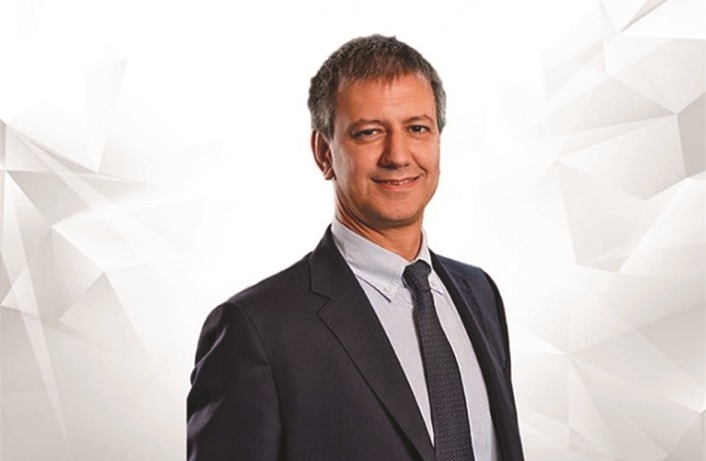
As the automotive world embraces transformative trends like electrification, sustainability and digital connectivity, Apollo Tyres stands at the forefront, driving innovation with its cutting-edge R&D. With a legacy of pioneering breakthroughs, Apollo’s commitment to shaping the future of mobility is grounded in a holistic approach that blends advanced technologies, sustainability and performance excellence.
Historically, Apollo Tyres has consistently delivered products tailored to diverse market demands. Its R&D operations in India and Europe synergise global expertise to innovate solutions for traditional and electric vehicles. Today, Apollo leads the industry with adaptable tyre platforms and technologies designed to meet the unique requirements of EVs, featuring low rolling resistance, noise reduction, traction and durability enhancements. Innovations such as real-time tyre sensors and noise-cancelling technologies further define the company’s reputation for excellence.
Looking ahead, Apollo Tyres is championing a sustainable future through material innovation and digital transformation. The company integrates renewable and recycled materials, collaborates with leading universities to explore eco-friendly alternatives and advances tyre retreading and circular economy principles. These efforts culminate in passenger vehicle prototype tyres composed of 75 percent sustainable materials, showcasing Apollo’s commitment to environmental stewardship. Meanwhile, digital tools such as virtual prototyping and AI-powered analytics accelerate R&D cycles, ensuring responsiveness to emerging trends.
Apollo Tyres envisions a mobility landscape where tyres transcend their functional role, becoming integral to vehicle connectivity and safety. By leveraging intelligent technologies like Tyre Pressure Monitoring Systems and sensor-enabled diagnostics, Apollo is redefining the tyre’s role in connected ecosystems. Through relentless innovation, Apollo Tyres not only aligns with the future of mobility but actively drives it forward. The R&D vision is to create value to customers by developing products and technologies that are best in class in performance while being profitable to business and sustainable to environment.
THE STRATEGY FOR 2026 IS BUILT ON THE FOLLOWING THREE PILLARS
- 1. Developing advanced tyre technology tailored for traditional and electric vehicles.
- 2. Embracing circular economy principles by integrating renewable and recycled materials.
- 3. Harnessing AI and virtual development tools to accelerate innovation in testing and material science.
Apollo’s investment in R&D has grown to around 2 percent of revenue. With a relentless focus on innovation, sustainability and customer satisfaction, Apollo is poised to continue its journey as a global leader in the tyre industry.
GLOBAL R&D TEAM: A SYNERGISTIC APPROACH
Our global R&D operations are strategically located in Chennai, India and Enschede, The Netherlands. These two centres integrate local expertise with advanced global technologies, addressing diverse market needs. Whether it’s the tropical climate and varied road conditions in India or the high-performance demands of European consumers, our R&D team tackles challenges with a unified approach. With state-of-the-art infrastructure, including advanced material research facility, raw material, predevelopment and simulation technologies, design, testing, advanced engineering, intellectual property, process and product development, Apollo Tyres delivers innovative tyre designs that address both regional and global demands.
ADVANCED MATERIAL RESEARCH AND SUSTAINABILITY INNOVATIONS
At Apollo, sustainability begins with material innovation. We are replacing conventional tyre components with eco-friendly alternatives. Collaborations with leading universities explore nano cellulose as a sustainable substitute for carbon black. Partnerships with Tyromer have revolutionised the quality of recycled rubber through cutting-edge devulcanisation techniques. On top we have signed collaboration projects with Asian premier institutes on bio degradation of ELT. Additionally, we promote natural rubber sustainability through plantation certifications, traceability programmes and education initiatives, achieving ISCC certification in our plants. Our material research extends to bio-based and recycled raw materials that enhance material sustainability. Advanced analytical tools enable precise characterisation of smart materials, supporting breakthroughs in polymer and filler technologies. Our tailored compounds ensure low rolling resistance, high traction and noise reduction, while delivering superior performance across all applications.
PREDEVELOPMENT AND VIRTUAL PROTOTYPING TECHNOLOGIES
Innovation is the heartbeat of Apollo Tyres. Our predevelopment teams integrate groundbreaking technologies, setting new benchmarks in the industry. FOAM technology exemplifies this spirit, reducing cavity noise for EVs without compromising on durability. This technology addresses the evolving needs of OEMs. Our sustainability-driven initiatives include ultra-low rolling resistance tyres with a rolling resistance coefficient of just 5.5 kg/tonne. Lightweight Truck Bus Radial tyres with a 10 percent weight reduction highlight our focus on environmental stewardship and performance innovation. Across all R&D locations, our focus on high performance drives tyre innovation. Advanced Computer-Aided Design (CAD) tools and real-world simulations help optimise tyre designs for diverse terrains. Detailed aerodynamic analyses further enhance fuel efficiency in vehicles, ensuring superior grip, handling and noise reduction. By leveraging virtual prototyping, we accelerate development cycles, optimising characteristics like rolling resistance, grip, comfort and noise.
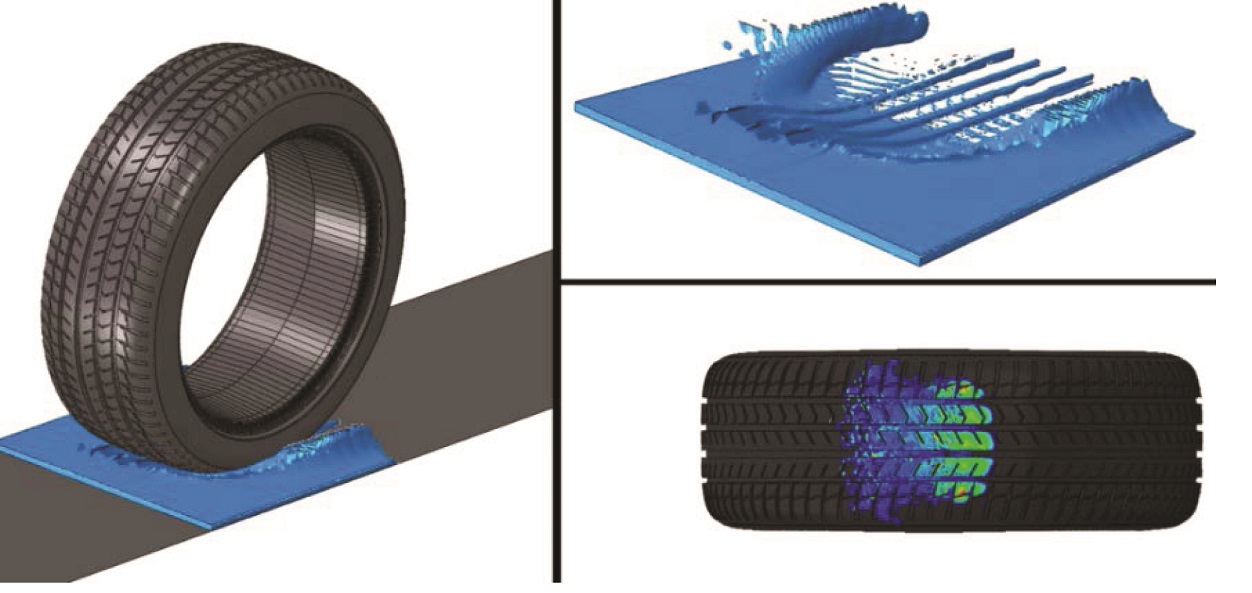
INTELLECTUAL PROPERTY
Our Intellectual Property (IP) teams has played a crucial role in safeguarding and advancing the prosperity of our company. Our IP team is tasked with recognising, securing and utilising our intellectual property assets to strengthen our competitive edge and generate lasting value for our stakeholders.
The following are some of the key achievements:
- 1. 25 patent applications were filed in FY24.
- 2. A total of 200+ active patents across geographies.
- 3. 29 design registrations filed in FY24.
- 4. A total of 300+ design registrations across geographies.
Our Intellectual Property (IP) team has cultivated an innovative culture within our organisation by encouraging employees to adhere to best IP practices, leading to the creation of high-value patents and designs. Consequently, we have generated new intellectual property assets and bolstered our product development capabilities.
ADVANCED TESTING EXCELLENCE
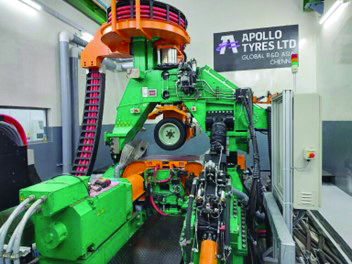 Testing is integral to ensuring the safety, performance and durability of our tyres. Our test facilities feature cutting-edge equipment that validates products under diverse conditions:
Testing is integral to ensuring the safety, performance and durability of our tyres. Our test facilities feature cutting-edge equipment that validates products under diverse conditions:
Flat-Trac Machine: This sophisticated tool measures force and moment properties, aiding in the design of high-performance tyres.
Anechoic Chamber: Simulating various road conditions, this chamber evaluates tyre noise levels, ensuring quieter and more comfortable rides. We have developed dedicated testing protocols for EVs, focusing on rolling resistance and noise reduction. The newly established Cut and Chip track at NATRAX, Indore, is designed to test tyres under extreme conditions, evaluating durability, uptime and grip. Through experiential drives, we showcase our technological prowess to fleet owners, business partners and media.
INTEGRATING TYRES INTO FUTURE MOBILITY THROUGH ADVANCED ENGINEERING
Apollo Tyres is at the forefront of revolutionising mobility through advanced engineering aligned with key megatrends like sustainability, connected vehicles and autonomous driving. Our intelligent tyres, equipped with sensors, telematics and software, enable seamless communication of vehicle conditions. Tyre Pressure Monitoring Solutions (TPMS), deployed in our tyre as service AVOLVE programme, enhance safety, reduce fuel consumption and provide remote diagnostics. The tyre of tomorrow will not just be a component but a critical element in the vehicle’s connectivity and safety systems.
ADVANCING INNOVATION THROUGH STRATEGIC COLLABORATION
Our R&D endeavours are grounded in robust partnerships with prestigious academic institutions that include both Indian and European universities. Apollo Tyres is also participating in consortium research on pre-competitive technologies. It is also worth mentioning that Apollo Tyres is also actively engaging with our supplier partners and customers to deliver cutting-edge technologies, products and services.

ADDRESSING TECHNICAL CHALLENGES AND INDUSTRY TRENDS
The automotive sector is undergoing rapid regulatory changes, including Europe’s Green Deal and Euro 7 standards. These developments demand stricter compliance with emission and mileage requirements, accelerating the adoption of EVs. Apollo’s R&D efforts address these challenges by focusing on sustainable materials and advanced technologies. Circular economy initiatives, such as tyre retreading and recycling-friendly compounds, reduce waste and maximise resource efficiency. Our development of passenger vehicle prototype tyres containing 75 percent sustainable materials underscores our commitment to innovation and environmental responsibility.
CONCLUSION
Apollo Tyres’ unified R&D operations in India and Europe are more than innovation hubs; they are the pillars of the company’s vision to lead in technology and sustainability. By addressing global challenges and leveraging cutting-edge tools, Apollo Tyres continues to shape the future of mobility, delivering technology excellence with operational excellence to customers worldwide.
Driving Forward Through Uncertainty
- By Rajiv Budhraja
- September 04, 2025
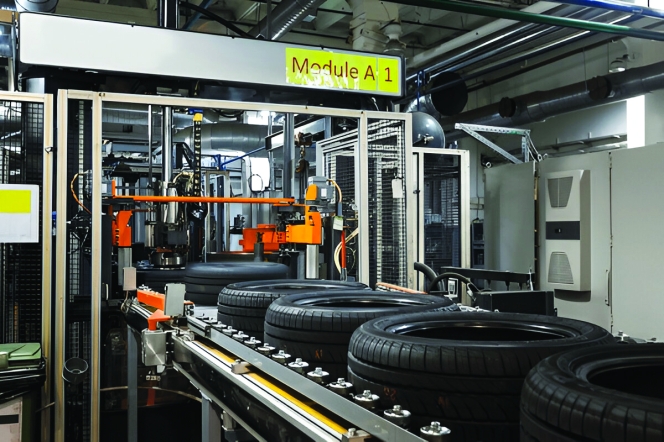
The past few years have not been easy for Indian industries. From post-pandemic recovery and supply chain issues to trade policy shifts and geopolitical conflicts, businesses across sectors have been navigating uncertainty. Yet, amidst this turbulence, the Indian tyre industry is emerging resilient – steadily carving out a global presence and positioning itself as a poster boy of India’s manufacturing story.
In the last one month alone, three developments have highlighted the strength, adaptability and future-readiness of the Indian tyre sector. Together, they offer a glimpse into an industry not only responding to challenges but also reimagining the road ahead.
Despite rising protectionism and the lingering aftershocks of disrupted global supply chains, Indian tyre exports have continued their upward march. In the last fiscal year, tyre exports from India have grown by nine percent year-on-year – a clear indication of global confidence in Indian-manufactured tyres. Tyre exports from India reached INR 250.51 billion compared to INR 230.73 billion in the previous fiscal, as per data released by the Ministry of Commerce, Government of India.
This isn’t just a story of volume. It’s a story of credibility – built on strong domestic manufacturing capability, world-class quality standards and a heightened focus on research and development.
Today, Indian manufactured tyres are competing with the best on parameters of performance, durability and cost-efficiency and providing a value proposition difficult to match. Indian tyres are exported to over 170 countries, with significant presence in the United States, European Union, Latin America and Southeast Asia. The US remains the top export destination, accounting for 17 percent of India’s tyre exports by value, followed by Germany (six percent), Brazil (five percent), UAE (four percent) and France (four percent).
With an estimated annual turnover of INR 1 trillion and exports exceeding INR 250 billion, the Indian tyre industry stands out as one of the few manufacturing sectors in the country with a high export-to-turnover ratio.
This export momentum has been further facilitated by the government’s active support in promoting domestic manufacturing through Make in India and other export-enabling reforms.
Perhaps nothing captures the maturing of the Indian tyre industry better than the recent global rankings by Brand Finance, the world’s leading brand valuation consultancy, which features four Indian tyre manufacturers – MRF, Apollo, CEAT and JK Tyre – among the world’s 15 strongest tyre brands. In fact, MRF, with a Brand Strength Index (BSI) score of 83.5, ranks as the third strongest tyre brand in the world after Michelin and Goodyear, according to the Brand Finance report.
This is not mere symbolism. It reflects decades of effort in building product trust, expanding global footprints and investing in brand equity. From high-performance radial tyres to off-the-road solutions, these companies are not just making tyres – they are shaping mobility experiences across geographies.
If the present is promising, the future looks even more exciting. A Vision 2047 report by PwC forecasts a CAGR of 11–12 percent for the Indian tyre industry over the next two decades. That is not just encouraging – it’s transformative.
This projected growth rides on several powerful drivers including rising demand from rural and semi-urban India, rapid growth in two-wheeler and commercial vehicle segments, a paradigm shift towards electric mobility and smart transport, greater OEM activity within India as global players deepen their localisation strategies and government policy support that encourages domestic production and discourages non-essential imports.
It’s also a growth that aligns with national priorities – self-reliance, sustainability and job creation.
India’s tyre industry is no longer playing catch-up. It is setting benchmarks. It is innovating, expanding and winning trust in markets around the world. It is making bold bets on sustainability, supply chain resilience and digital transformation. Tyre manufacturers in India have collectively invested nearly INR 270 billion over the last 3-4 years. These investments, spanning both greenfield and brownfield projects, highlight the industry’s confidence in India’s long-term growth potential and the industry’s commitment to capacity expansion and technological advancements.
As we steer towards 2047 – India’s centenary of independence – the tyre sector stands ready to play a pivotal role in the journey. One that connects not just places but aspirations.
Rajiv Budhraja is Director General of the New Delhi-based tyre industry association, Automotive Tyre Manufacturers’ Association (ATMA).The views expressed here are personal.
Engineering Giants: OTR Tyres… The Science Behind Extreme Performance
- By Ertugrul Bahan
- August 15, 2025
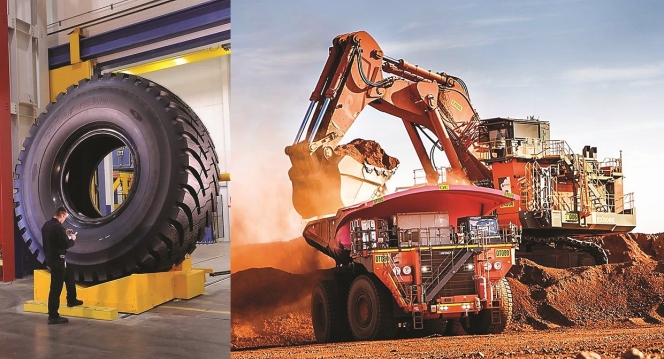
OTR tyres, rugged design and advanced technology that withstand the most demanding conditions... From mining to construction, these giant tyres play a critical role in keeping industries running smoothly.
What does the term ‘off-road tyre’ mean to us? Giant, robust, special and imposing – a tyre for heavy-duty vehicles. While there are already some tracked loaders and cranes on the market, stationary work, excavation, loading and transport are carried out with mobile machinery in open-pit mines or on heavy-duty construction sites. Transport vehicles, cranes and large-capacity loaders are always equipped with robust and durable rubber tyres. The last 50 years have seen a true revolution in the off-road tyre segment, as tyres have become larger every decade. Newer dump trucks have higher load capacities, requiring the installation of larger tyres to meet this growing demand.
Today 3,500-plus hp engine big haulers loaded carriage capacity reaches to 400-plus tonnes equipped with a tyre such as 59/80R63 extra load size. Such trucks are coupled with loaders having a shovel capacity of 60 tonnes on open pit areas. These load capacities are enormous, and the new generation of trucks offers even more. Tyre sizes up to 63/80R63 or some other size combination with low platform and wider dimensions are in the market.
Thirty to 40 years ago, tyre sizes for 50-80-tonne haulers were around 36.00-51 or smaller. Today, we are talking truck carriage capacities of 450-500 tonnes with hybrid engines. More efficient AC electrical drive haulers and having tyre sizes up to 70-inch rim size tyre are on the pipeline. These vehicles will be able to accommodate tyres with a diameter of over four metres, a weight of over 5.5 tonnes and a load capacity of over 120 tonnes per tyre.
High-tensile reinforcement materials and new generation rubber compound technologies play an important role in these revolutionary developments.
Extreme conditions, extreme performance, heat and puncture resistance for uninterrupted operation... This is how OTR tyres master harsh environments (quarries, mines, construction sites).
Tyres for open-pit mining, underground mining and construction remain separate categories. Their dimensions and basic requirements also vary. However, load capacities and the number of autonomous structures with electric motors and ultra-wide tyres are steadily increasing. The use of advanced materials in self-monitoring tyres with integrated pressure and wear sensors will become more widespread. Giant radial tyres for electric vehicles will proliferate on the market.
Tyre demands for extreme load-bearing capacity, improved cut and tear resistance (against sharp, abrasive stones) and improved heat dissipation through deep tread patterns will increasingly prevail, in line with customer demands. While the tread depth of off-road tyres was only 50 to 60 mm in the 1970s, today’s deep-tread off-road tyres reach 100 to 110 mm. Radial construction with new compound and heat dissipation technologies enables off-road tyres with deeper tread patterns, which also represents a significant advantage for the circular economy. Low-temperature off-road tyres also offer higher and multiple retreadability.
Both bias-ply and radial off-road tyres face significant challenges such as heat, abrasion, traction, sidewall cuts and fire protection. Although current off-road tyre technology has advanced significantly compared to earlier radial off-road tyres, some brands use bias-ply reinforcement layers, primarily on the sidewalls or tread, for improved cut resistance. Bias-ply off-road tyres remain preferred for certain applications, particularly forestry and some mining tyres.
Titan International (USA) underscores its strong presence in the truck tyre market with its Mining & Construction Bias division. This underscores the strategic priority of these specific applications in the OTR tyre market. In the US, Titan focuses on cut-resistant compounds and special tread patterns for rock environments that perfectly meet the most stringent performance requirements of bias construction.
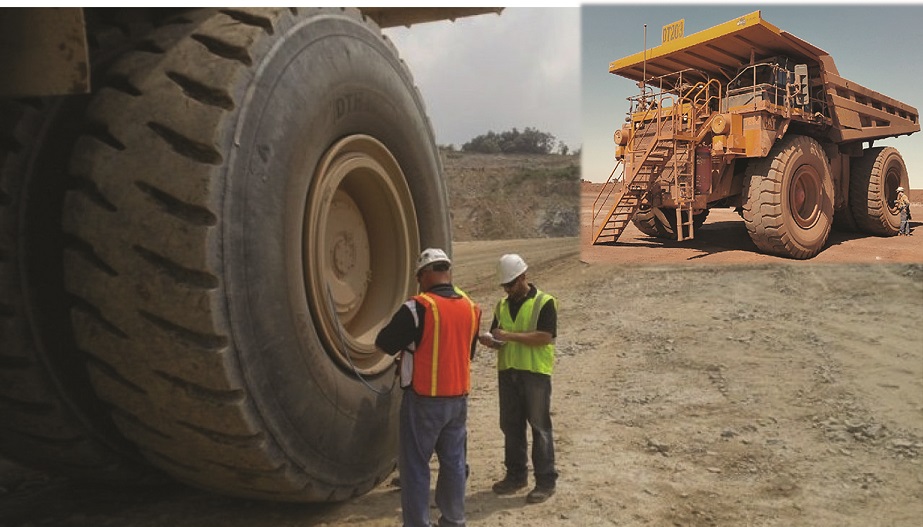
Michelin, Bridgestone and Goodyear dominate the OTR tyre market, with demand varying regionally. Large tyres for mining, underground mining and construction require durability, heat resistance and smart technology to meet the changing needs of the industry.
Michelin, Bridgestone and Goodyear dominate the global OTR tyre market, but Continental and BKT are also important players. Titan, Yokohama, the Chinese company ZC Rubber and the Indian company Apollo are other niche players that could disrupt global markets with more affordable alternatives. Furthermore, regional demand varies considerably between Asia, North America and Europe due to different mining, construction and regulatory environments. This benefits the different brands, whose combined commercial and technological strengths differ.
Michelin, Bridgestone and Titan (North America and Australia) produce giant mining tyres up to 63 inches wide. BKT, Apollo and ZC Rubber produce low-cost mining tyres in Africa, Latin America and India. Michelin and Bridgestone generally offer smart, autonomous tyres in North America and Europe. Yokohama and Continental (Japan and Scandinavia) offer underground and speciality tyres.
For open-pit mining, powerful electric-powered dump trucks and wheel loaders will offer exceptional load-bearing capacity (over 100 tonnes per tyre). They feature cut and chip resistance (against sharp, abrasive rocks), heat dissipation and a deep tread pattern, which will become increasingly popular.
Underground mining vehicles with narrow low-profile tyres and dump trucks (LHD), on the other hand, will be equipped with compact, fire-resistant low-profile tyres. Their low flammability, puncture resistance and high manoeuvrability will also be important criteria.
Large Scale Construction vehicles like massive dozers, graders, dumpers, articulated dump trucks and motor graders will need high traction tyres for both mud and loose surfaces with reinforced sidewalls to avoid cuts and having high longevity (mixed on road/off road use).
OTR tyre manufacturers compete on durability, profitability and performance. Their primary challenges are extending tyre life, optimising fuel efficiency and reducing wear.
All of the major OTR tyre manufactures need to compete in this high demanding segment of the tyre industry. The biggest challenge in every segment is achieving a long service life without tyre failure. Improved traction and rolling resistance, as well as reduced maintenance requirements, are real advantages.
The cost of a set of tyres is always divided by the total number of labour hours to determine the unit cost per tyre hour. Various parameters influence tyre and other operating costs. To minimise fuel and tyre costs in mines, better road maintenance, operator training in environmentally friendly driving (acceleration/braking), monitoring tyre pressure and loading and the use of predictive analytics (telematics to measure fuel consumption and tyre wear) are essential.
Overloading increases tyre stress, accelerating wear and fuel consumption. Poor road conditions with potholes and spills lead to more cuts and flat tyres, increased rolling resistance and higher fuel consumption. Harsh acceleration or braking always leads to overheating and faster wear. Although large radial-body trucks cost nearly USD 100,000, every preventative measure and maintenance is essential for business reasons.
Innovations such as RFID, flame-retardant compounds and environmentally friendly materials are driving the industry forward. OTR tyre manufacturers compete with specialised designs: mining tyres must be cut-resistant, earthmoving equipment must be durable and port tyres focus on efficiency.
Tyre manufacturers must survive in this highly competitive and demanding industry. Mining tyres are exposed to extreme conditions and require cut resistance thanks to highly abrasion-resistant compounds and additional steel belt layers. Earthmoving tyres require flexibility and durability thanks to all-season tread compounds and rock-resistant designs. Port logistics tyres feature low rolling resistance and chemical resistance thanks to lightweight steel belts. RFID tracking offers real advantages for tyre tracking.
Innovations for niche applications are also essential for brand building and address specific challenges. Some underground mining tyres feature non-marking and flame-retardant compounds for enhanced safety and performance. Arctic tyres require low-glass transition temperature polymers and microspike technology for better traction in extreme cold. As always, off-road electric tyres require improved efficiency and lower noise levels.
The use of recycled materials poses a real challenge for this segment, but more durable designs certainly reduce waste and replacement frequency. However, bio-based compounds and recycled rubber must be more widely integrated into new products.
Key trends in the OTR tyre segment include intelligent monitoring systems, environmentally friendly compounds and improved reinforcement techniques. Graphene-reinforced tyres promise extremely high strength and heat resistance. Sustainability will be a priority in OTR tyre manufacturing, with a focus on reducing environmental impact through innovative materials and designs.
Why Giant Mining Tyres Cost More Than Car
- By Adam Gosling
- August 14, 2025
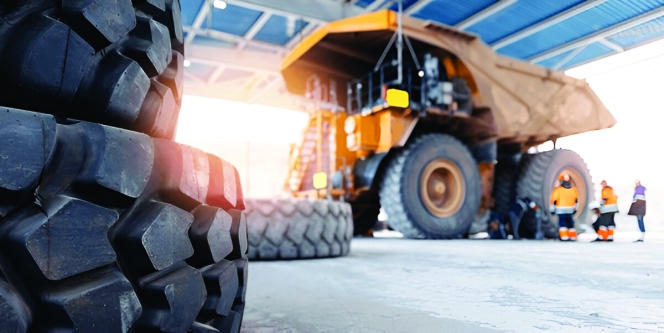
Imagine a giant tyre that weighs twice the weight of your EV, costing as much or more than your EV; you are looking at the largest truck tyres in production. Weighing over 3.5 tonnes and standing better than four metres in diameter, these giants are actually very sensitive.
Such tyres support loads of 100,000 kg; yes, that’s a single tyre. The truck fully loaded is more than 600 tonnes. To put that in perspective, that single tyre supports 50 average cars – that’s 300 cars in a single vehicle.
These tyres have to be managed very carefully to extract the maximum amount of work without destroying them. Overwork the tyres or engage in poor maintenance and the tyre can fail, sometimes catastrophically, and this can happen inside just a few hours of operation.
The OTR (off the road) tyre sector is at the cutting edge of tyre technology. It is paired with the other end of the spectrum being MotoGP tyres, which, whilst a light construction, are exposed to all sorts of side forces as the bikes achieve lean angles of 65 degrees. Both are cutting edge in tyre development.
OTR tyres can have up to 40 different rubber compounds that are required to work in harmony, which is one of the pinnacles of rubber manufacturing. There is deep engineering involved in having different rubber compounds within the one tread package. This happens for select MotoGP circuits where corners one way well outnumbers corners heading in the opposite direction. Your humble daily drive tyre is the result of all the testing and development that occurs within conception of these giant OTR and MotoGP tyres.
The tyre talk within the F1 paddock about tyres is old school for OTR tyres. For many years, a mining circuit was carefully monitored after the theoretical calculations had been made as to how far and fast could these giant haul trucks travel. The reasoning behind these parameters was based around the tread and compound selection. This is known as the tonne kilometre per hour factor. Some operations required a high-speed compound, which was usually less abrasion resistant but have a higher heat capacity. Whilst slower speed operations wore cut-resistant tread packages. Low-speed operations such as underground receive yet different tread patterns and compounds. Then there is the appropriate tread pattern and class to select.
In periods of high demand, there have been many attempts to produce OTR tyres, quite often with limited success. I observed one truck that had been fitted with an emerging manufacturer’s tyres that didn’t even get to the loading point before the whole tread package separated from the carcass. These giant tyres are fragile and sensitive.
Applying appropriate maintenance has been made proactive with the advent of real-time TPMS. Decisions on the vehicle’s duty cycle can be made depending on what level of work the tyre pressures indicate they are experiencing. Just like MotoGP and F1, the tyres are the limiting factor of performance. Even suspension issues can be identified as the load centre shifts towards the weak suspension component.
Unlike on road tyres that have a large safety margin designed into them, OTR tyres are often worked to their maximum, and in early days of mining, well overloaded and over run. When the OTR tyre supply went into shortage, many OTR tyre users realised that without appropriate management, the sustainability of their operation
would be called into question. Tyre costs can easily blow out and cause a lot of economic angst and pain.
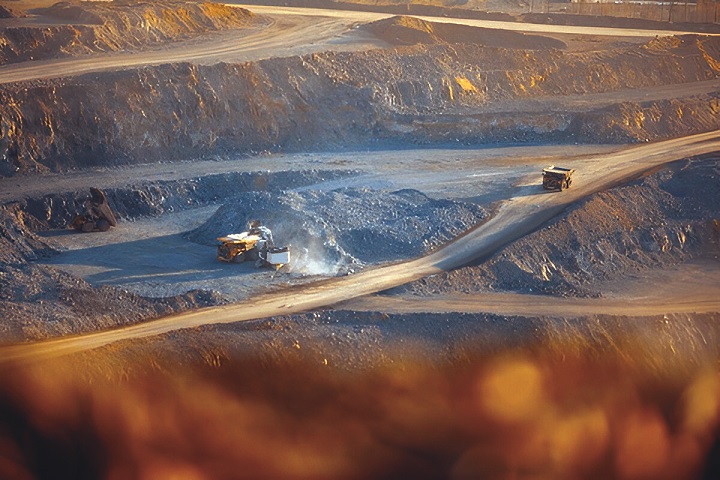
Truck and fleet managers who are at the top of their game utilise real time tracking of the vehicles to identify their capacity for work, that is how far and how fast can the truck travel before the tyres become overheated. With a combination of GPS tracking and tyre pressure monitoring, tyres can be observed and the truck reallocated to a shorter lighter haul before the tyre sustains heat damage. A tyre is very much like a loaf bread or a cake; you can overcook it, and alas, the outcomes are not reversible. Once the cake is burnt, it’s ruined; an OTR tyre is no different.
With such an expensive asset, organisations have realised that without tyres, their operations come to a grinding halt. In TyreSafe Australia terms, “if they are not turning, they are not earning” has never been more factual than during an OTR tyre shortage. Executives have come to understand that tyres for a rubber-tyred haulage operation represent a very large cost centre, quite often in the top three or four expenses. There are many aspects to extracting the best performance from these gentle giants, but most importantly, it is the provision of the appropriate volume of inflation medium.
By engaging a tyre data management platform, such performance data and detail can be gleaned and used to programme maintenance and also to provide feedback for the production crews, who ultimately should be the ones paying for the tyre operational costs. A fresh mining area under development may well result in an increased number of cut and damaged tyres. The tyre crews see this on a daily basis as they attend their charges, but the old head in the sand attitude of ‘move more tonnes’ touted by some miners usually ends up being an economic disaster. Having observed operations driven by production tonnages, I have also been witness to the absolute waste of tyres that have been cut and damaged by poor operational practices. Such operations do not usually make a profit.
A tyre manufacturer can produce a superb product that has the potential to achieve best practice life, but if an end user drives over a rock that fatally injures the tyre, how is this reconciled? The tyre manufacturer has no control over what the end user does – the same as your daily drive where tyres are left unattended until there is a failure. Then it is the tyre’s fault, NOT!
The technology involved in being able to manufacture a rubber item with upwards of 36 different rubber compounds within the single tyre is enormous. Each different rubber has different properties the designer is seeking to utilise. Having these compounds adhere to the adjoining rubbers is a scientific mine field; it can work, but it can also come apart quickly.
Using software to design tyres both in constructional terms as well as the actual operational side of the tyre has meant that advances can be made within days rather than months or years. Having been part of a tyre development team, I had to wait for the new design tyres to be designed, then manufactured and shipped to site before being mounted. Only then can they go into operations where the research from the technical design team was proven. The software used today can now simulate the operations and identify any weaknesses in the tyre design even before the physical production mould is created. With CAD/CAM machines, now fine sipes within the tread pattern can be included. John F Sipe must be amazed to see the intricate patterns now being produced. The sipes not only provide better traction for on road tyres but permit a shorter heat path for OTR tyres.
When the tyre is operating, the resultant hysteresis is evidenced by the level of temperature rise within the tread and casing. The interface at the casing tread is the most sensitive and most easily damaged by overwork or overspeed, or under pressure. Excess heat is the mortal enemy of an OTR tyre.
With appropriate management of operational factors, an OTR tyre can be capable of many thousands of hours’ work. With bad management, the tyre may well die within just several hours.
By managing tyre inflation pressures, a sound reflection of the operation’s philosophy towards creating profit can be determined. The easiest way to ensure your tyres perform as the OEM designed is to monitor and maintain the inflation pressure. It’s not that hard, surely?
Take care, stay TyreSafe.
Degrees In Sustainability
- By Adam Gosling
- July 08, 2025
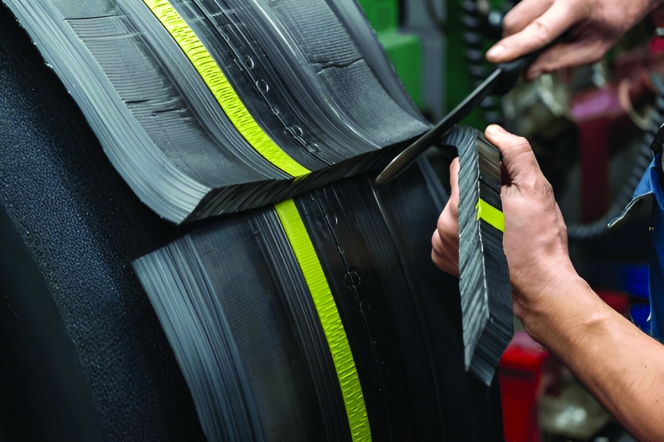
Raw materials and sustainability are symptomatic of a tyre when you think about it.
As a society very dependent upon mobility, our drivers and passengers need to be able to enjoy sustainable service from the tyres our industry produces. To date, primarily raw materials have been used in manufacturing, but there is a paradigm shift underway. The recyclability of tyres is as yet still a question more than a solution, from an economic perspective as well as an environmental approach.
As we are all observing, global economics is entering an interesting phase and hands are being outstretched looking for payment or retribution, or both.
The tiresome question in front of everyone is ‘what is the cost’?
a) Of not doing ‘it’
b) Of attempting to do ‘it’
c) Of being able to enjoy economic success to do ‘it’
d) Having positive outcomes for the environment or at least neutral
e) Option C as well as D, very hard to achieve this balance in my opinion, but nevertheless, is the most desired
The ‘it’ in this case is producing a tyre with no adverse effects or outcomes.
Tyre OEMs are progressing through the issue of designing tyre tread patterns as well as structural casing considerations (even down to acoustic considerations from inside the tyre’s air chamber) as the tyre in motion is now the largest noise generator (no engine or exhaust noise) on a current generation electric vehicle (EV). Having high levels of noise is part of modern life; however, as people, we don’t accept noise intrusion, especially inside the modern auto cocoon, sorry, car. How far do we push sustainability?
A tyre admirably demonstrates there can be reciprocity and sustainability between unlikely companions. Nominally, inflexible steel lives happily with totally flexible rubber whilst the road pavement (bound stone, cement or unsealed) abrades the tread rubber. From an unsustainable perspective, there are the tread road wear particulates (TRWP) that are generated at the tread pavement interface; huge questions here as the yet to be determined answers need to be found.
With more fuel-efficient propulsion systems, greater demands are placed on the humble tyre. Rolling resistance (of the tyre) is a major consumer of energy and now, not forgetting, aerodynamics too.
The global program of ‘safer vehicles’ also has impact on tyre performance not only on the overall life but also the traction / grip aspects. Vehicles that are heavier, faster and more responsive place increased demands on tyre performance.
WANTED: lighter, quieter, more grip in all conditions, longer life, greener, cheaper ... the holy grail.
There is a price to pay; as Isaac Newton stated, ‘to every action, there is always opposite and equal reaction’. This is a basic law of physics, the third law of motion. There is no free lunch; we usually pay in many ways, either in the short term, the medium or the long term, or in all terms.
Retreading is very much a partial solution using the casing of the tyre to yield second, third and more lives. Tyre OEMs have not favoured retreading in past times as for every tyre retreaded, a new virgin tyre was not required. Tyre manufacturing facilities operate on volume; the more they can produce, the lower the cost of each item. Selling more tyres was the only answer. Retreading has many benefits, and with modern electronics, the quality of the product can be as assured as a virgin tyre. In some cases, the performance of the retread can be superior to that of the original tyre. Retreading is a sustainable practise to a point. Eventually, the tyre’s structural casing will fatigue and fail. Commercial aviation tyres are retreaded numerous times as a matter of practise. An aircraft tyre will experience loads well in excess of that your daily drive tyre experiences. When the tread is worn down, it is replaced with a new tread package. The other very important consideration in regards tyre retreading is the reduction in the consumption of raw materials. A tyre is assembled using upwards of 40 percent carbon black. There is about 20 percent steel and fibre product whilst the rubber that converts to a petroleum oil during the pyrolysis process is the remainder. Every casing reused reduces the requirement for fresh raw materials and associated manufacturing.
Whilst recycling offers sustainability in a circular economy scheme, there is a long way to go before sustainability is actually sustainable. With increased recycling and the rise of the circular economy, past attitudes are being revised, modified, changed or rewritten. The prime hurdle to jump for this potentially emerging (recycling) industry is the refining of the end products tyre pyrolysis systems generate. The carbon black has many challenges before re-use for tyres. The oil also requires refining prior to replacing petroleum. What about the byproducts from the refining process? If the pyrolysis product is more expensive than the original raw material, will you as the consumer still buy cheap? If so, why are we, the tyre OEM s, investing in our ESG programme of sustainability?
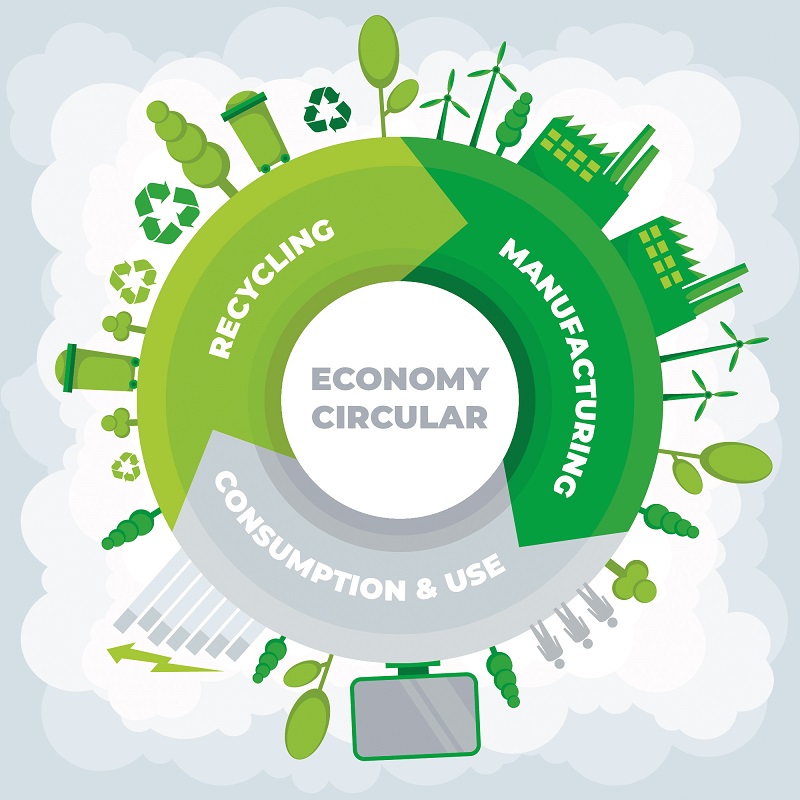
Repurposing end-of-life tyres has great potential, but there are concerns around the outcomes if such products are used. Ground rubber used in uncaptured soft fall has been outlawed in some jurisdictions; even captured rubber such as in hot mix bitumen has outfalls (TRWP). Geological uses as ground support and river stream bank erosion mitigation are another limited use. The re-use of the raw materials is the ideal outcome, but sustainability is still a process in progress.
All processes are required to extract the highest outcomes from our raw materials as well now (with landfill diminishing capacity), thinking about end-of-life products (not just tyres, think about electronics, for instance, and the list grows), so there is a requirement to promote the recycling, re-purposing and retreading of tyres. The retreading facilities can be localised geographically to reduce the sea transport for virgin tyres from manufacturing facilities to the end destination. Pyrolysis and re-purposing facilities are best locally located, but there has to be a market for the downstream products; this is a crunch point. However, there are advantages that we are currently not availing ourselves of with the many economic benefits seemingly available. With export/import tariffs introduced or even if sea lanes are unable to be used to import/export tyres, then retreading capacity will be a license to print. There must be a strategic deliberation to include tyre retreading in national planning as well. Our mobile society requires tyres; from farm to plate, our food is supported by tyres for much of the journey, then there is the rest of life.
We should not underestimate the critical role tyres play in our global supply chains and mobility; however, the price we pay has to be sustainable in the long term. That means easing our demands on raw materials including the use of recycled products, but we also need to extract better performance not just from the tyres so much but also from the maintenance of the vehicles. In my overviewing large data sets of tyre life performance, it has been noted that ‘we’ use only about 65 to 70 percent of the available tread; many tyres are scrapped earlier than they should be as a result of irregular wear and/or poor maintenance. Considering the aids available today (namely drive over alignment pads, tyre pressure monitoring systems TPMS), there is little excuse for such dubious maintenance decisions stemming from sub-standard economic directions.
The old model of ‘produce more sell more’ has a large price to pay. Sustainability is now becoming a serious issue in our supply chains. We (businesses) have to be able to open the shop doors tomorrow, and that means generating capital reserves that enable us to pay the bills and put food on the table.
What price is sustainability? Are you prepared to pay today for tomorrow’s sake?


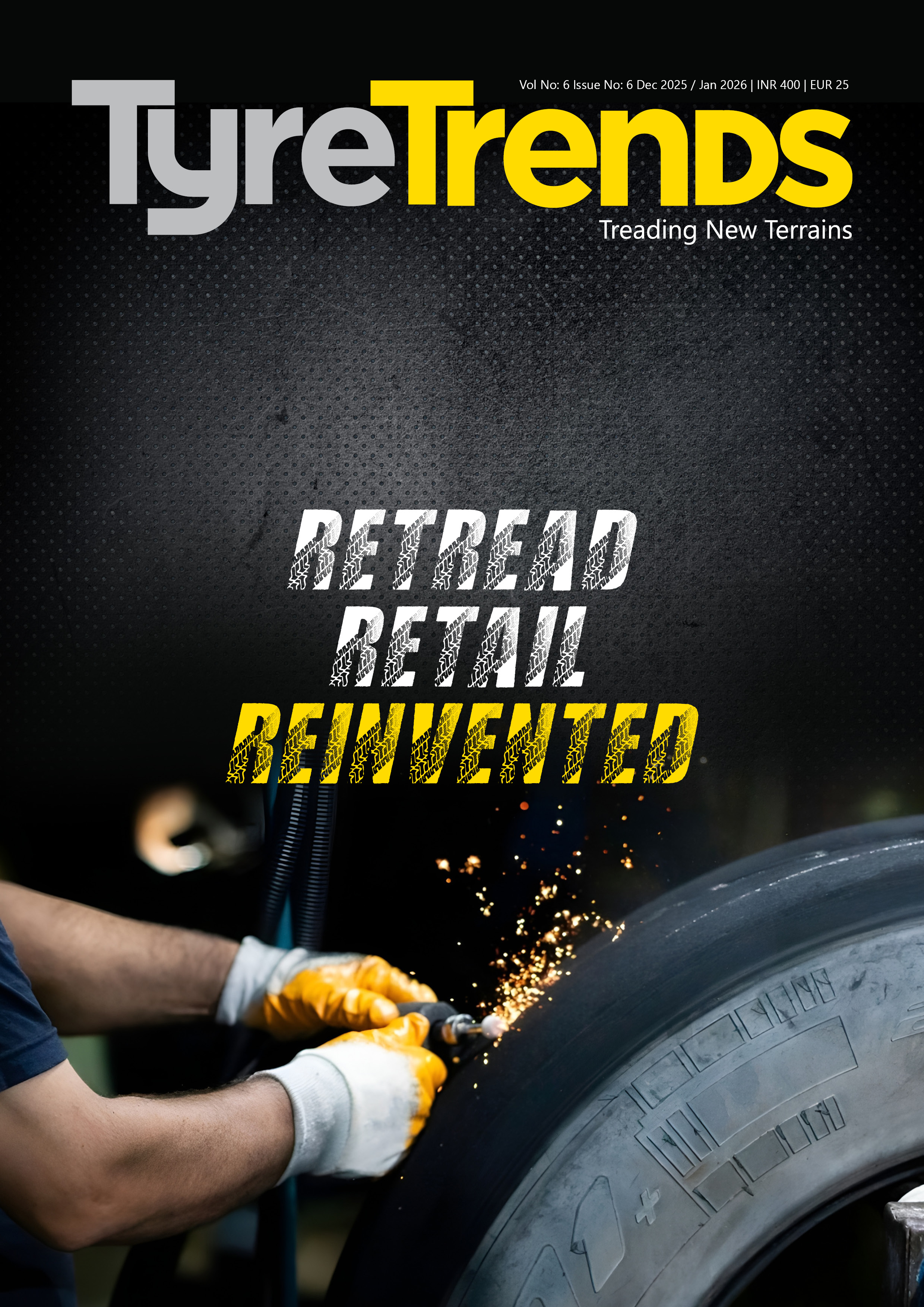

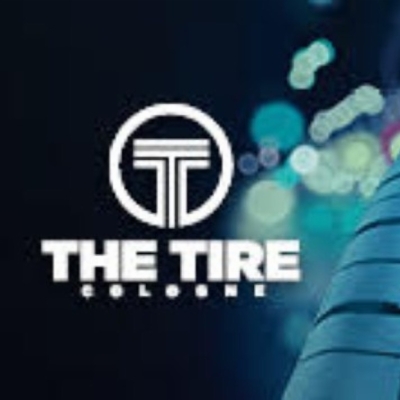


Comments (0)
ADD COMMENT